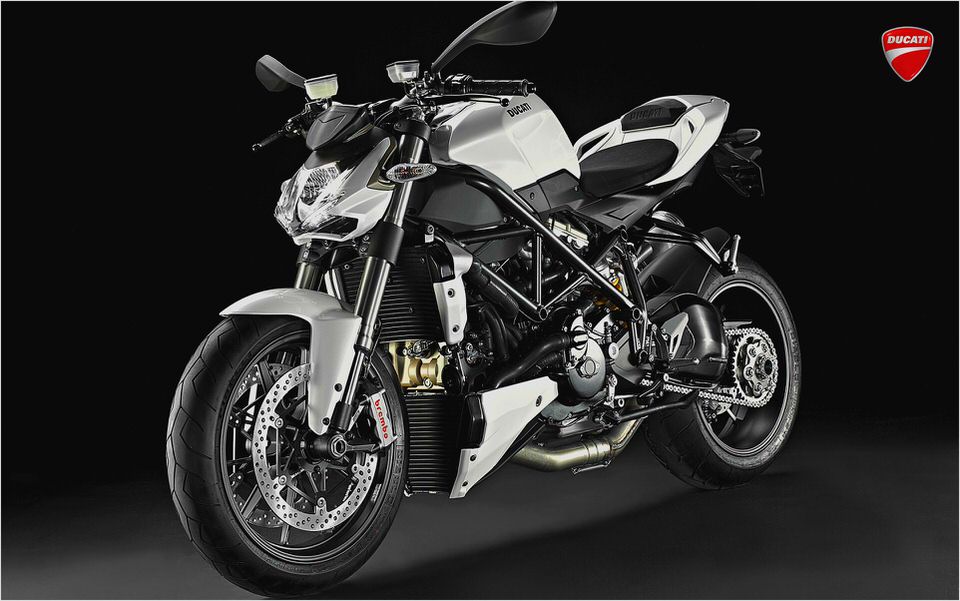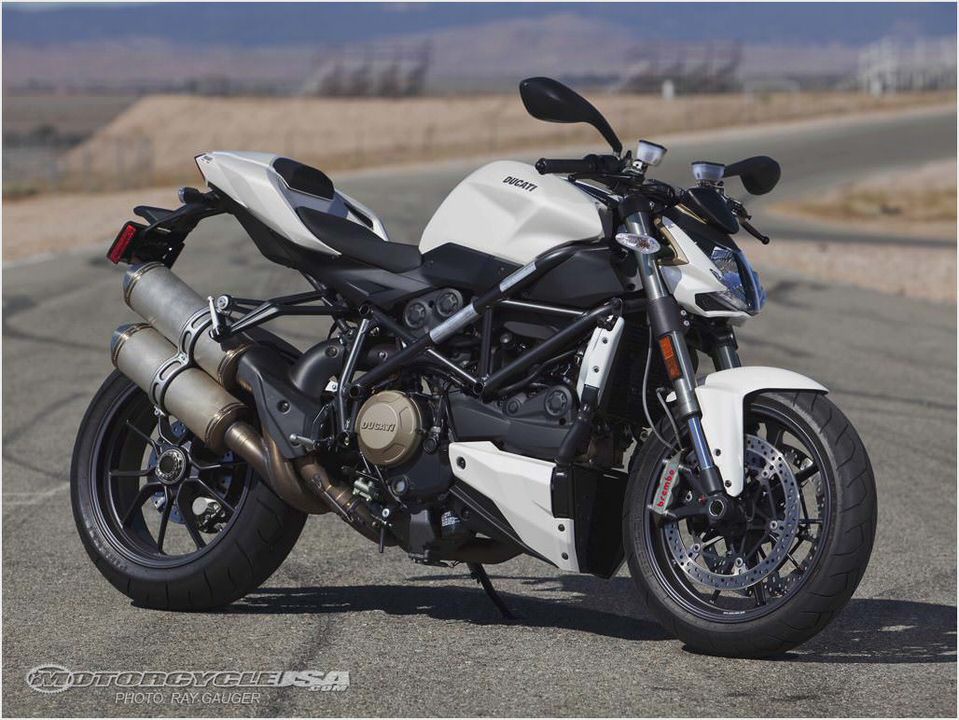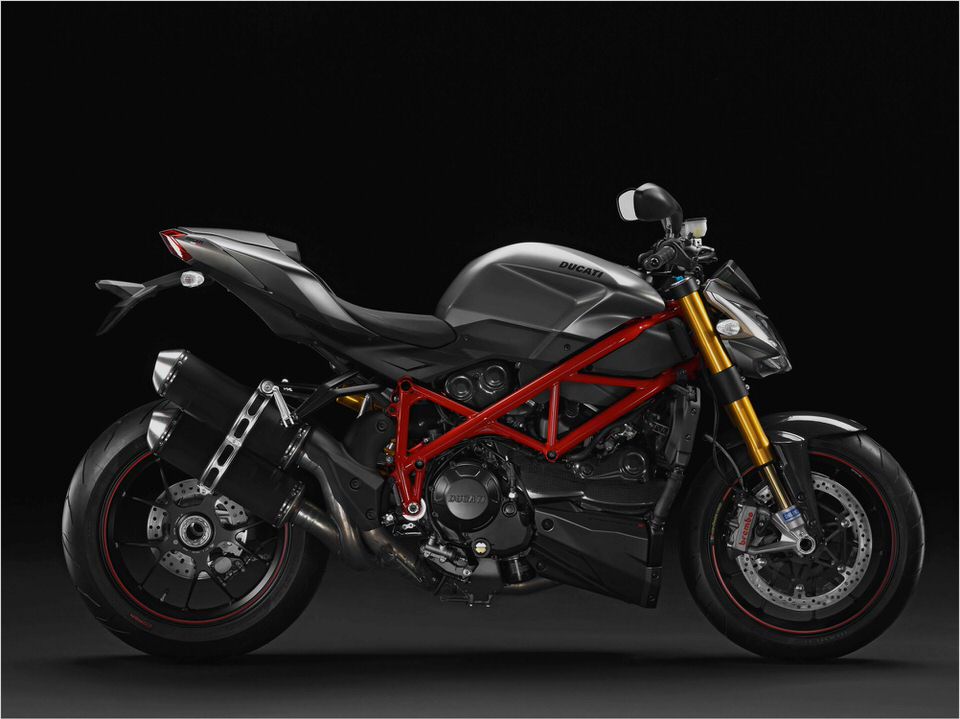
No Fear
They say: “Confident contender—supreme fighter.”
We say: “Check and check.”
It’s not often that the word afraid is used at a press intro. Yet that was one of the main reasons Ducati gave for creating the new Streetfighter 848.
According to Ducati Marketing Manager Paolo Quattrino, “Non-extreme riders who loved the Streetfighter’s styling asked for more ‘usability’—a new interpretation of the Streetfighter concept.”
This led to a “strong technical review” of the original 1099cc Streetfighter model, wherein a smaller 849cc engine was just the tip of the iceberg. That engine is the first mid-sized V-twin to use the 11-degree (referring to valve overlap) Testastretta that debuted on the Multistrada 1200S. This makes for greater torque and smoother running at low rpm than the standard 37-degree, Superbike-spec motor.
The engineers took more into account than engine performance, however. The 848’s chassis also was redesigned to make it more user-friendly. Unlike the original Streetfighter, whose front end was raked out to increase stability, the Streetfighter 848 uses the 848 EVO’s racy chassis geometry.
Beyond this, the handlebars were raised 20mm to yield a more upright riding position and the footpegs were spaced out 10mm so the exhaust pipe no longer forces the rider’s right boot heel out at an awkward angle. The Marzocchi fork and Sachs shock also received softer spring rates and reduced damping.
To sample their new pride-and-joy, Ducati invited moto-journalists to the inaugural event at the new Autodromo di Modena, a stone’s throw from the Ferrari factory in Maranello. A 55-mile street ride followed by two 15-minute sessions on the 1.2-mile racetrack made for a brief-yet-thorough test.
Surprisingly Ducati Traction Control comes standard, and as we prepared to depart on our morning street ride, I was reminded just how unintuitive it is to adjust. In my haste, I inadvertently set it to #8—the most intrusive setting, meant for riding in the rain. This caused the light on the dash to flicker and the engine to sputter if I so much as thought about turning the throttle while leaned over, so I was thankful that we soon stopped to regroup.
There I had the ride leader remind me how to toggle through the settings, selecting #3, which worked much better. This is one area where Ducati really should take a page from rival Aprilia’s book, as that company’s TC is much easier to adjust—plus you can do it on the fly, whereas on the Streetfighter you must be stopped.
That little faux pas behind me, I was able to experience just how well this mid-sized ’Fighter works on the road—especially compared to the original, which tended to fall into corners and stand up on the brakes. The 848 handles much more nimbly and steers neutrally right up to the point where you add a little front brake mid-corner; then it resists turning. Those brakes work great, by the way, thanks in part to a new softer-feeling pad compound.
The suspension also worked well for the most part, though on its soft standard settings the front end bottomed under braking and the bike wallowed over mid-corner undulations.
Naturally the 132-horsepower, 849cc engine doesn’t have quite the steam of its 155-bhp, 1099cc sibling, but it more than gets out of its own way. Engine response was good if a bit abrupt off closed throttle, and there was a noticeable surge around 4000 rpm—though that was difficult to ascertain given the location of the instruments, far below the rider’s field of vision. Speaking of rpm, overall gearing is quite tall—probably to reduce engine noise and vibration—thus I only used fourth gear during our brief, triple-digit blast on the autostrada.
After lunch we hit the racetrack, and I was amazed by how different the Streetfighter felt. With the suspension stiffened up and the stock Pirelli Diablo Rosso Corsa tires replaced with race-compound Supercorsa SC2s, the bike handled much more solidly and didn’t resist turning, bottom under braking or wallow. The first production motorcycle equipped with Pirelli’s latest 180/60-17 rear tire, mounted on a 5.5-inch rim, the 848 changed direction very well.
But with nary a ripple on the virgin track surface, it was impossible to ascertain what effect the taller aspect ratio might have had on mid-corner bump absorption.
The spring rates felt a tad soft under my 200-plus lbs. and this, coupled with the aforementioned footpeg spacers, contributed to me wearing out my right boot’s toe slider in each of our 12-lap sessions. It didn’t help that the ultra-tight track had eight right-hand turns and just three lefts.
All in all, the Streetfighter 848 is largely what you’d expect it to be: a downsized version of its big brother. The surprise is just how many changes Ducati made to it, and how different it feels. Riders moving up from a 650cc twin or 600cc four won’t be intimidated by it, yet those moving down from a 1000 won’t find it the least bit boring.
If you’re in the market for a mid-sized naked bike, don’t be afraid to consider it!


- This Ducati is made in Thailand RideApart
- Terminator 3 Rise of the Machines
- Used 2004 Ducati 749 – Reviews, Prices and Specs at Motorcyclist Magazine
- First Ride: 2013 Ducati 1199 Panigale R – Cycle News
- First Ride: 2006 Ducati ST3 – Road Tests: First Rides – Visordown

